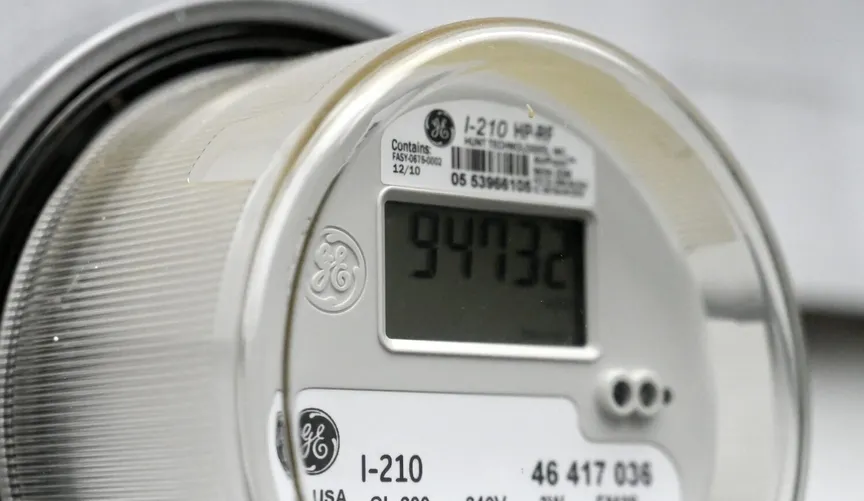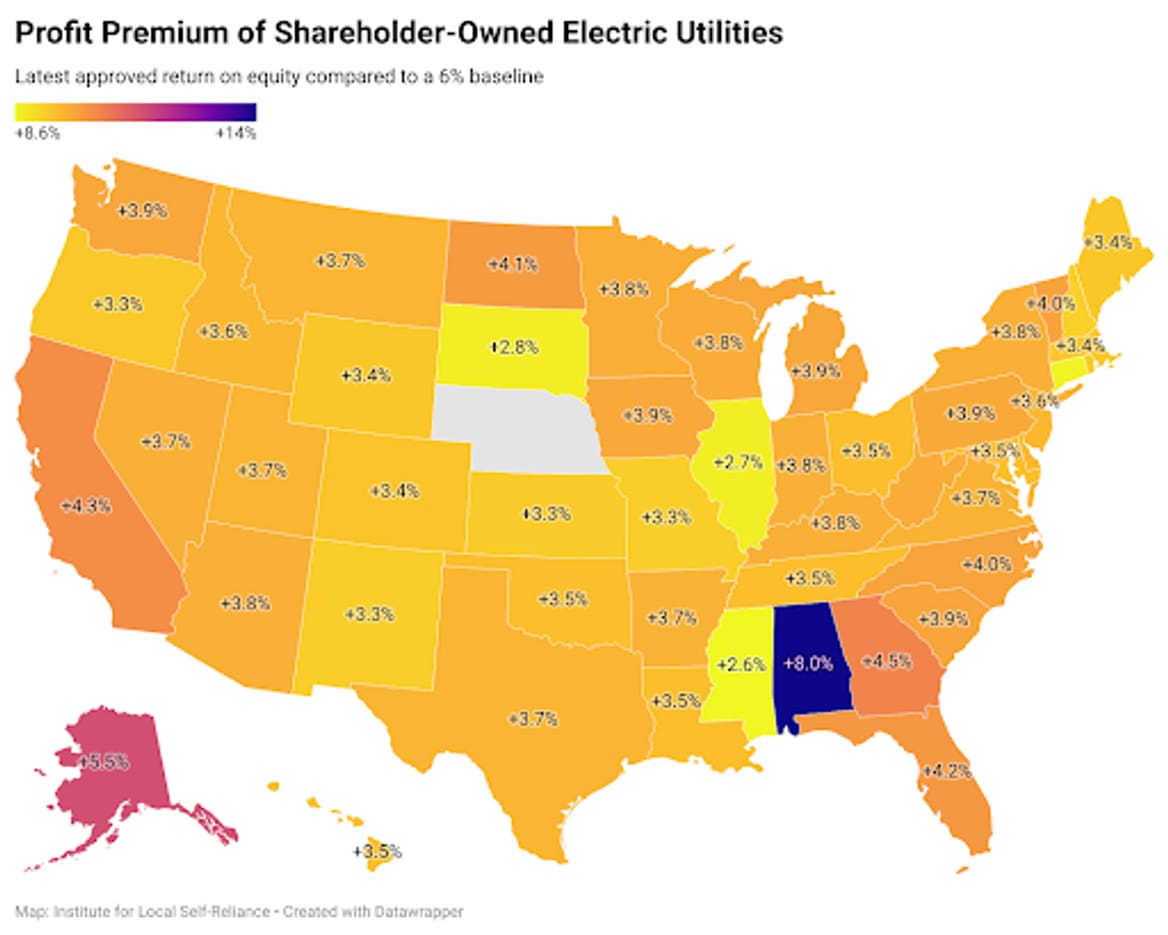
Electricity is getting more expensive — and Americans are getting worried.
Just look at last week’s election, when Democratic candidates who put a spotlight on energy affordability won key races in Virginia, New Jersey, and Georgia.
Fortunately, state and local lawmakers, including those just elected, have the authority to do something about this increasingly urgent problem. Here are three immediate steps they can take to save consumers money on their power bills.
State regulators can lower skyrocketing electric bills practically overnight by reducing utility profit rates. Investor-owned utilities earn a guaranteed profit on every dollar they spend. State public utilities commissions set these profit rates, and right now they’re way higher than they used to be.
Former utility executive Mark Ellis estimates the average American household overpays utilities by $300 per year, because the companies extract 3 to 7 cents more on every dollar of investment than they ought to.

Utilities consistently try to scare regulators off from lowering their excessive profits, claiming service quality will decrease or costs will actually rise — but there’s little evidence that doing so will negatively impact consumers.
We know that utilities can maintain high-quality service with lower profit rates because they’ve done it before. Recent research by RMI shows that utilities still received enough capital to build new infrastructure when profits were more reasonable in the late 1970s and early 1980s. Returning profit rates to those lower levels can also more than offset any increases in borrowing costs that might result from impacts to credit ratings.
Lawmakers can save consumers billions by adjusting incentives to pay utilities for performance rather than construction.
Under current rules, utilities profit significantly more from building new infrastructure than from investing in energy efficiency or cheaper upgrades to existing poles and wires. Most analyses of high electricity prices find that utility spending on transmission and distribution infrastructure is a main or major culprit.
The more utilities build, the more they profit, so they build a lot. Every grid problem looks like a nail to a utility that can use a gold-plated hammer to “solve” it — and consumers get bent out of shape as a result.
Customers in New York saved big when, in 2013, the state directed utility Con Edison to prioritize reducing energy demand via efficiency initiatives and solar panel installations. The investment successfully put off a $1 billion substation upgrade, saving New Yorkers $500 million in profits not paid to utility shareholders on top of $800 million in avoided hardware upgrades.
We could significantly reduce electricity use with energy-efficiency investments that routinely cost less than the fossil-fuel power generation favored by most utilities.
Instead, utility grid spending has exploded in recent years, outpacing inflation and electricity sales combined, according to the Energy Information Administration. And for each dollar of capital utilities invest in infrastructure, they’ll extract as much as 50 cents back in profits from customers over the life of the pole, transformer, or equipment.

A few states have comprehensive programs requiring utilities to prioritize cost-effectiveness rather than construction, but only Hawaii has discarded the conventional wisdom connecting utility profits to spending. State legislators can act now to align utility profit motives with performance, or at least efficient investment, and lower electricity bills in the process.
Local solar and batteries make electricity right where people use it, and more of each saves everyone money. Models suggest that dramatically scaling up energy resources like rooftop solar and batteries, and coordinating them with tools like smart thermostats, could cut future grid costs by half a trillion dollars.
But state and local laws, and utilities’ own policies around crucial processes like connecting to the grid, are mostly written to block and slow down small-scale clean energy.
It’s up to lawmakers to enact policies that remove those barriers by, for example, simplifying and automating permitting and zoning requirements, allowing non-utility ownership of solar projects, and fairly compensating solar owners through net metering. They’ll have to overcome vehement opposition from utilities, which see these kinds of policies as endangering their profits and allocate their lobbying dollars accordingly.
Electricity prices are rising at more than twice the rate of inflation. The Trump administration’s obstruction of clean energy and commitment to fossil fuels, particularly coal, are expected to make bills climb even further. Data-center development won’t help either. Most Americans feel this trend happening, and they are concerned.
It’s time to get a handle on the problem.
We’re all tired of paying more for electricity. We can pay less if state legislators and utility regulators seize the moment and act in the interest of consumers — rather than the shareholders of utility companies.